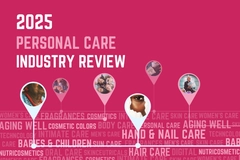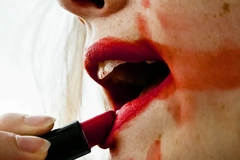Beiersdorf challenge prompts ASA ruling on La Roche-Posay claims
Key takeaways
- The ASA upheld one of Beiersdorf’s three complaints, ruling that La Roche-Posay failed to clearly signpost its “number one dermatologist-recommended” claim.
- The ad must not appear again in its current form, and future ads must provide clearer signposting to supporting information.
- The regulator accepted evidence supporting La Roche-Posay’s “new mode of action” statement.

The UK Advertising Standards Authority (ASA) has upheld one of Beiersdorf UK’s three challenges of La Roche-Posay’s claims for its Mela B3 Cleanser.
Beiersdorf called into question three of the products’ claims, including:
- “A new mode of action like never before.”
- “Number one dermatologist-recommended brand in the UK.”
- The verifiability of “number one dermatologist-recommended.”
The personal care company said the statements were misleading. However, the ASA has declared that the “new mode of action” claim was supported by evidence and accepted substantiation for the “number one” claim based on surveys of UK dermatologists.
The regulator upheld one complaint on verifiability. It has ruled that the product’s advertising failed to clearly signal where consumers could substantiate the “number one” claim.
The listing debuted on La Roche-Posay’s website on December 11, 2024. The disputed claims were featured in images on the site. The ASA has said that the advertisement must not be published again in its current form, and future communications must include clearer signposting for comparative claims.
Number one claim
The CAP Code, which specifies advertising rules, states that if a company makes a factual claim, it must be supported by solid evidence.
The ad claimed La Roche-Posay was the No.1 dermatologist-recommended brand in the UK.
 Beiersdorf’s challenge sparks UK regulator ruling. To prove its “number one dermatologist-recommended” claim, La Roche-Posay showed results from surveys of UK dermatologists carried out by an independent research agency between 2022 and 2025.
Beiersdorf’s challenge sparks UK regulator ruling. To prove its “number one dermatologist-recommended” claim, La Roche-Posay showed results from surveys of UK dermatologists carried out by an independent research agency between 2022 and 2025.
In 2023 and 2024, La Roche-Posay was the top answer for the open-ended question: “Which dermo-cosmetic brand do you recommend or prescribe the most?”
The surveys included a small percentage of UK dermatologists. But, since La Roche-Posay had a clear lead over other brands, the results were statistically reliable, according to the ASA. Therefore, the regulators said the claim was not misleading.
Even though the statement was verifiable, the CAP code says that the claim check needs to be clearly indicated for consumers to review.
Although the “number one dermatologist-recommended brand in the UK” statement was proven true, the survey reference was in the product description and not clearly linked to the main claim.
Therefore, regulators ruled the ad did not meet the Code’s requirement for verifiable comparisons.
Validating research
The Mela B3 cleanser product fights hyperpigmentation using La Roche-Posay’s Melasyl ingredient.
The ASA said that L’Oréal UK (which owns La Roche-Posay) demonstrated that the active Melasyl worked differently from existing hyperpigmentation treatments.
La Roche-Posay’s full claim stated: “Hyperpigmentation innovation: new multi-patented Melasyl active. Fight hyperpigmentation. A new mode of action, like never before.”
To validate its marketing, L’Oréal said this claim was supported by information in the product description: “intercepts excess melanin at a different stage of its production before it marks the skin.”
The parent company highlighted that it intended to introduce Melasyl as a novel ingredient and to differentiate it within the marketplace — not create a comparative superiority claim.
L’Oréal provided research indicating that no other active ingredient currently available on the market targets the same stage of the biochemical pathway as Melasyl.
The company conducted a review of existing scientific literature, patents, and cosmetic ingredients, alongside globally marketed cosmetic products, to analyze all known hyperpigmentation actives and their respective modes of action. It also provided six studies, including three randomized, blinded clinical trials.












